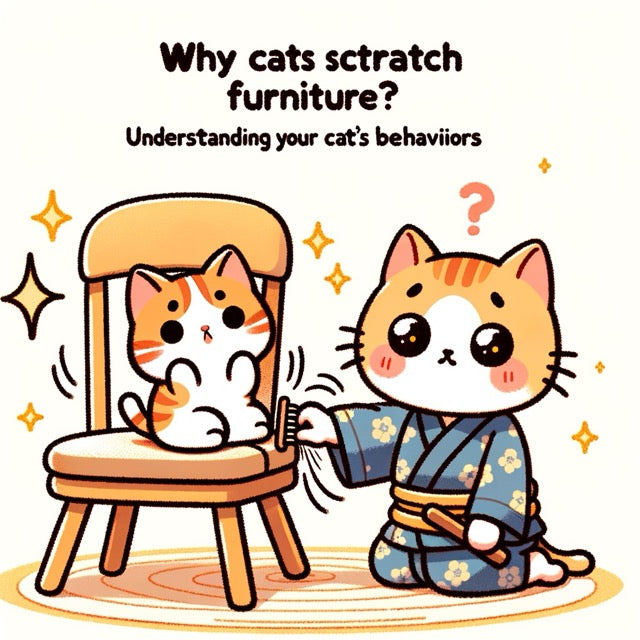
Why Do Cats Scratch Furniture? Understanding Your Cat's Natural Behaviors
Share
Cats are fascinating creatures with behaviors deeply rooted in their instincts and physiological needs. Many cat owners find themselves puzzled and sometimes frustrated by their cats' persistent furniture scratching. But before you consider this behavior a mere nuisance, it's crucial to understand the reasons behind it. Scratching is not just a capricious habit; it's a complex activity that serves multiple essential functions for your feline friend.
Key Takeaways:
-
Scratching helps cats keep their claws sharp by shedding the old outer layers.
-
It serves as physical exercise and a way for cats to stretch their muscles.
-
Scratching is a method for cats to mark territory and express emotions.
The Multifaceted Nature of Scratching
1. Maintaining Claw Health
One primary reason cats scratch is to maintain the sharpness of their claws. This behavior helps remove the worn outer layers of their nails, revealing new, sharper nail surfaces underneath. This process is vital not only for their natural hunting instincts but also for their mobility and overall physical health.
2. Physical Exercise and Stretching
Scratching also provides significant physical benefits. It engages various muscle groups, including those in their forelimbs and back, and helps them stretch fully. This activity is particularly beneficial when cats wake up from sleep or after a period of rest. The act of stretching through scratching helps maintain their flexibility and agility.
3. Marking Territory
Cats are territorial animals by nature, and scratching is a potent way of marking territory. The pads of their front paws contain scent glands which release pheromones when they scratch, leaving behind their unique signature. This scent marking is a clear communication to other animals about their presence and territorial claims.
4. Expressing Emotions
Interestingly, scratching can also be an emotional outlet for cats. Whether they are excited, stressed, or even feeling playful, cats might turn to scratching as a way to express these emotions. This aspect of scratching is often overlooked but is crucial in understanding why your cat might scratch more during certain times.
Strategies to Manage and Redirect Scratching
Provide Appropriate Scratching Surfaces
To prevent furniture damage, offer plenty of appropriate scratching alternatives like posts, boards, or mats made from materials that appeal to your cat. Position these in strategic areas where your cat is most likely to scratch.
Incorporate Deterrents and Attractants
Using sprays with scents that cats find unappealing can help keep them away from certain furniture pieces. Conversely, catnip or pheromone sprays can make scratching posts more enticing.
Regular Nail Care
Maintaining your cat’s claws can minimize the damage they can do when scratching. Regular trimming might reduce the necessity for your cat to scratch for claw health, though it won't eliminate the behavior entirely due to its other functions.
Understand and Address Emotional Needs
Since scratching can be an emotional expression, providing a stress-free environment and engaging your cat in regular play can help manage excessive scratching. Understanding the emotional cues that lead to scratching can also be beneficial.
Conclusion
Scratching is an innate and multifunctional behavior in cats, encompassing health maintenance, physical exercise, territory marking, and emotional expression. By understanding these needs and providing for them, cat owners can better manage this natural behavior, leading to happier cats and intact furniture.
